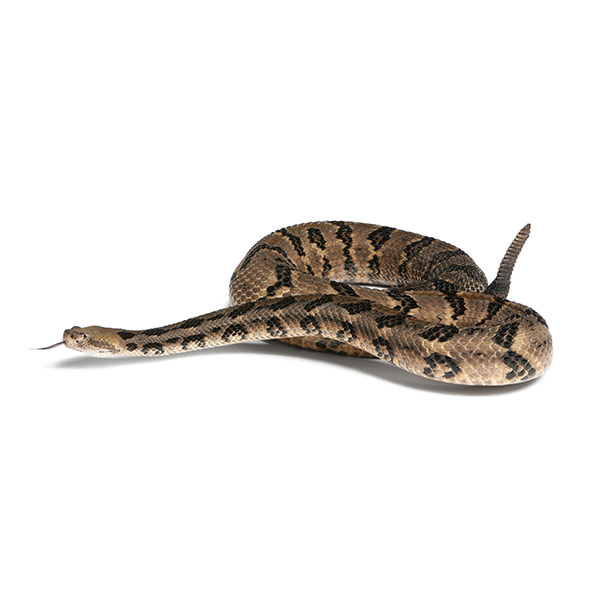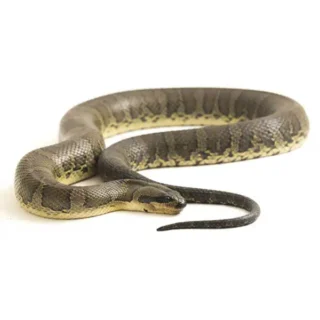Canebrake Rattlesnakes in Central Arkansas
Also known as the timber rattlesnakes or the banded rattlesnake, canebrake rattlesnakes typically sport a gray coloration, sometimes featuring a pinkish hue. Their tails boast the trademark rattlers, displaying colors ranging from brown to black or even yellow. While their average length averages around four feet, some individuals have been observed to reach lengths of up to 6 feet. These reptiles exhibit peak activity during spring and summer, remaining active both day and night. As the fall season arrives and temperatures cool, canebrake rattlesnakes begin to ready themselves for hibernation throughout the winter period.
Canebrake Rattlesnakes Habitat
Canebrake rattlesnakes can be encountered in a broad range of habitats, including swampy territories, river floodplains, pine forests, and rural landscapes. They exhibit a preference for forested areas, particularly those with exposed, sunlit rocky formations. During hibernation, they often seek refuge in dens shared with copperheads or black rat snakes. Their diet primarily consists of small mammals, including rabbits, rats, mice, birds, and squirrels.
Canebrake Rattlesnakes Behaviors, Threats, or Dangers
While typically displaying a calm temperament, this snake becomes highly dangerous when provoked. Canebrake rattlesnakes are active throughout both day and night but typically remain coiled in ambush positions, prepared to seize prey. Similar to all rattlesnakes, they use their rattle as a warning signal prior to striking. Should a bite occur, it is essential to distance oneself from the snake, as they may strike again if they perceive a threat. If possible, attempt to identify the snake and promptly seek medical attention.
If you are having an issue with canebrake rattlesnakes on your property, it is best to consult a professional pest control company for removal.
Need help with Canebrake Rattlesnake control?
Need Pest Control Service?
Leave your information below and we’ll be in touch with a FREE quote!
"*" indicates required fields
*During normal business hours. After hours calls will be returned the next business day.




